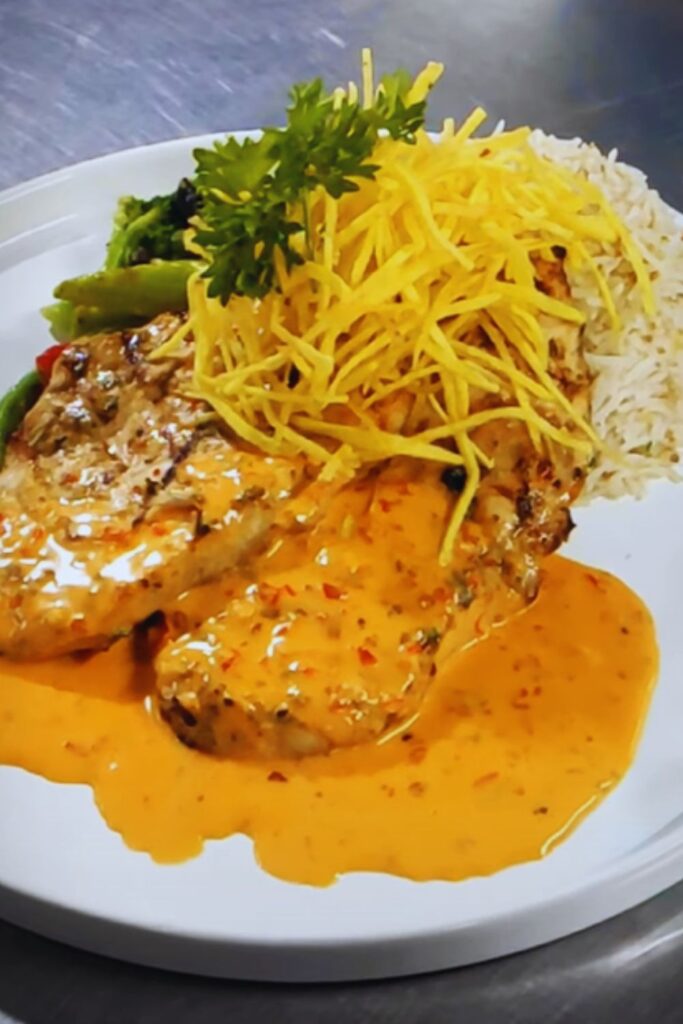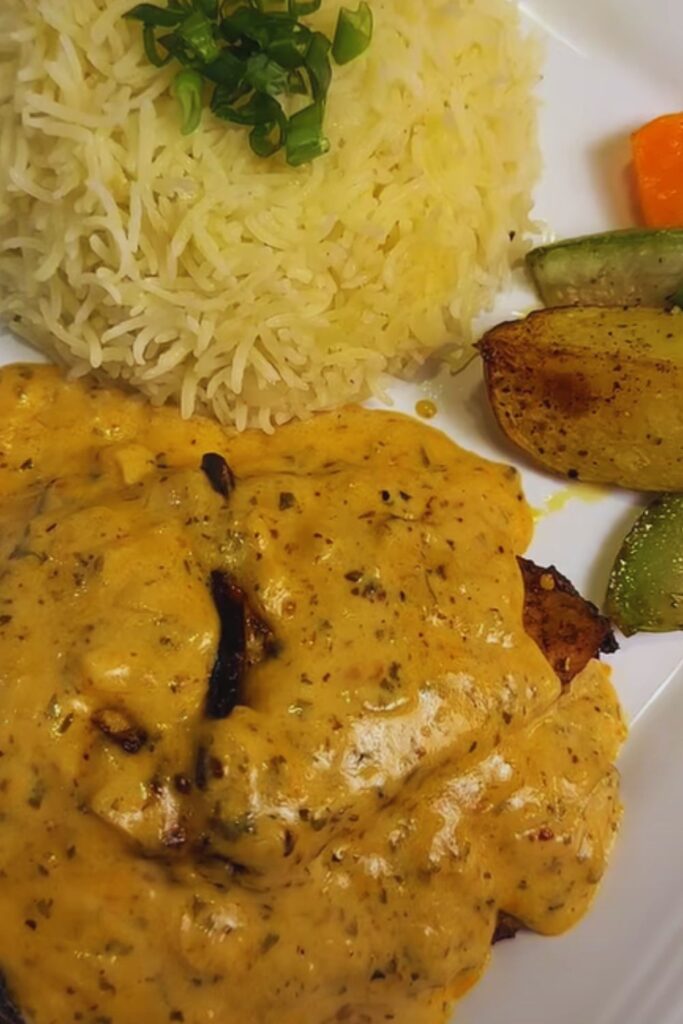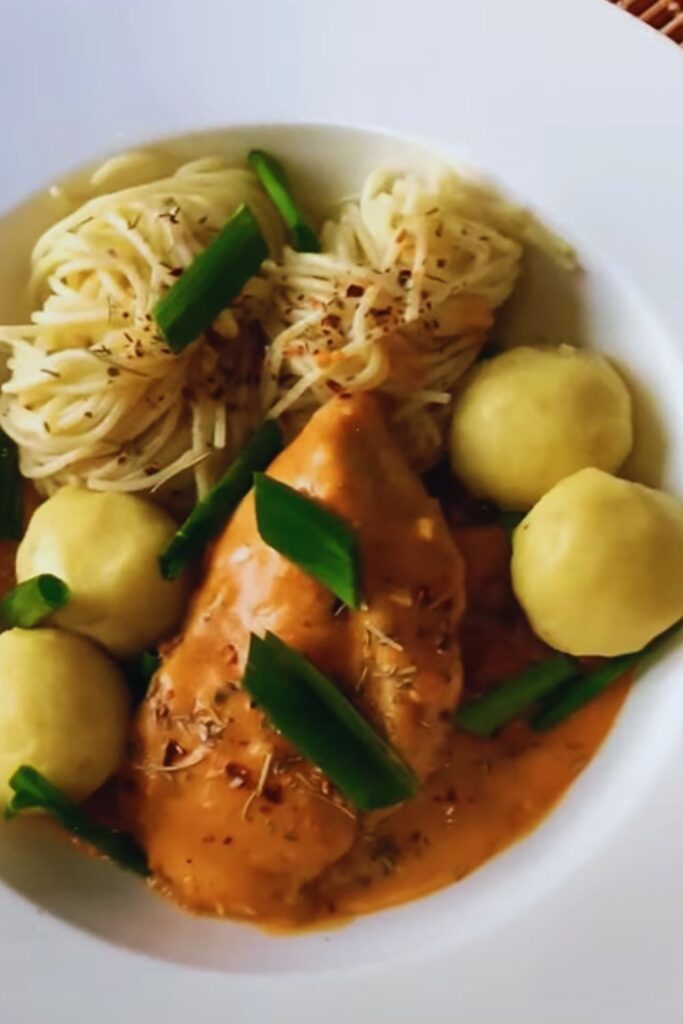Have you ever tasted a dish that instantly transported you to another part of the world? That’s exactly what happened the first time I tried authentic Moroccan chicken. The intoxicating blend of spices, the tender meat falling off the bone, and the complex layers of flavor created a culinary experience I couldn’t forget.
Today, I’m going to share my passion for this North African delicacy, taking you on a flavor journey through Morocco without leaving your kitchen. This isn’t just another chicken recipe—it’s an exploration of a centuries-old culinary tradition that balances sweet, savory, and spicy elements in perfect harmony.
The Rich History of Moroccan Cuisine
Moroccan cuisine stands as one of the most diverse culinary traditions in the world. Nestled at the crossroads of multiple civilizations—Arab, Berber, Mediterranean, and African—Morocco’s food culture has evolved over centuries, absorbing influences from various conquerors, traders, and immigrants.
The art of making a proper Moroccan chicken dish dates back generations, with recipes handed down from mother to daughter, each adding their own special touch while preserving the essence of tradition. What makes Moroccan chicken truly special is the country’s spice trade history. As a major stop along ancient trade routes, Morocco became a melting pot for exotic spices from around the world.
These historical influences created what we now recognize as characteristic Moroccan flavors: the warmth of cinnamon, the earthiness of cumin, the slight bite of ginger, and the unique tang of preserved lemons. When applied to slowly cooked chicken, these elements transform a simple protein into something extraordinary.
Essential Moroccan Spices and Ingredients
Before diving into cooking techniques, I want to introduce you to the building blocks of Moroccan chicken. The right ingredients make all the difference between an ordinary chicken dish and an authentic Moroccan experience.
Key Spices in Moroccan Cooking
- Ras el Hanout: Literally meaning “head of the shop,” this is Morocco’s signature spice blend containing up to 30 different spices. Each family and spice merchant has their own unique recipe.
- Cumin: Provides earthy warmth and is considered one of the fundamental spices in Moroccan cooking.
- Cinnamon: Adds subtle sweetness and warmth, balancing savory elements.
- Turmeric: Gives the characteristic golden color to many Moroccan dishes while adding a mild flavor.
- Ginger: Fresh or dried, ginger provides a spicy kick that cuts through rich dishes.
- Saffron: Though expensive, even a small amount imparts a distinctive flavor and golden hue.
- Paprika: Adds color and a mild pepper flavor to many Moroccan dishes.
Essential Ingredients
: Preserved Lemons These are lemons that have been pickled in salt and their own juices for weeks or months. They provide a unique tangy flavor impossible to substitute. The rinds become soft and edible, adding bright, complex citrus notes.
: Olives Moroccan cooking often incorporates green or purple olives, adding briny notes that complement the sweet and savory elements.
: Olive Oil High-quality olive oil is fundamental to Moroccan cooking, used for both cooking and finishing dishes.
: Fresh Herbs Cilantro and parsley are staples in Moroccan cuisine, adding brightness and freshness.
: Honey Used to balance the spices with subtle sweetness in many tagine recipes.
: Dried Fruits Apricots, prunes, and dates are commonly added to savory dishes for texture and sweetness.

Traditional vs. Modern Cooking Methods
In Morocco, chicken is traditionally prepared in a tagine—a cone-shaped earthenware pot that promotes slow, even cooking while trapping moisture. The unique design allows steam to rise, condense, and drip back down onto the food, creating incredibly tender meat.
| Cooking Method | Equipment | Cooking Time | Flavor Profile | Best For |
|---|---|---|---|---|
| Traditional Tagine | Clay or ceramic tagine pot | 1.5-2 hours | Deep, complex, concentrated | Weekend cooking, authentic experience |
| Dutch Oven | Cast iron or enameled pot | 1-1.5 hours | Rich, homogeneous, well-blended | Family meals, similar to traditional results |
| Slow Cooker | Electric slow cooker | 4-8 hours | Mild, well-integrated, tender | Busy weekdays, hands-off cooking |
| Pressure Cooker | Electric pressure cooker or stovetop | 25-35 minutes | Intense, slightly less developed | Quick meals that still capture essence |
| Oven-Baked | Casserole dish or roasting pan | 45-60 minutes | Concentrated, possibility for crisp skin | Feeding crowds, Western adaptation |
While using a traditional tagine yields the most authentic results, I’ve found that a heavy dutch oven works wonderfully for home cooks without specialized equipment. The key is low, slow cooking that allows the flavors to meld and the chicken to become incredibly tender.
My Signature Moroccan Chicken Recipe
After years of experimenting with different techniques and ingredient ratios, I’ve developed a version of Moroccan chicken that balances authenticity with accessibility. This recipe doesn’t require a trip to specialty stores but still delivers rich, complex flavors.
Ingredients
For the chicken:
- 8 bone-in, skin-on chicken thighs (about 3 pounds)
- 2 tablespoons olive oil
- 1 large onion, finely diced
- 4 cloves garlic, minced
- 2-inch piece fresh ginger, grated
- 1 teaspoon ground cumin
- 1 teaspoon ground coriander
- 1 teaspoon ground cinnamon
- 1/2 teaspoon ground turmeric
- 1/4 teaspoon ground cayenne pepper (adjust to taste)
- 2 tablespoons tomato paste
- 1 cup chicken broth
- 1 preserved lemon, rind only, chopped (substitute with 1 regular lemon’s zest and juice if unavailable)
- 1 cup green olives, pitted
- 1/2 cup dried apricots, chopped
- 2 tablespoons honey
- 1/4 cup fresh cilantro, chopped
- 1/4 cup fresh parsley, chopped
For serving:
- Couscous or flatbread
- Chopped fresh herbs (cilantro and parsley)
- Toasted almonds
Step-by-Step Instructions
- Season the chicken: Pat chicken thighs dry with paper towels. Season generously with salt and pepper on both sides.
- Brown the chicken: In a large dutch oven or heavy-bottomed pot, heat olive oil over medium-high heat. Place chicken thighs skin-side down and cook until golden brown, about 5-6 minutes. Flip and cook for another 3 minutes. Remove chicken to a plate and set aside.
- Create the aromatic base: In the same pot with rendered chicken fat, add onions and cook until softened and translucent, about 5 minutes. Add garlic and ginger, cooking for another minute until fragrant.
- Build the flavor profile: Add all ground spices (cumin, coriander, cinnamon, turmeric, and cayenne) to the pot and stir continuously for 30 seconds until fragrant, being careful not to burn the spices.
- Add remaining components: Stir in tomato paste and cook for 1 minute. Pour in chicken broth, scraping the bottom of the pot to release any browned bits. Add preserved lemon, olives, and dried apricots.
- Return chicken to pot: Nestle the browned chicken thighs into the sauce, skin side up. Bring to a gentle simmer, then reduce heat to low. Cover and cook for 45-50 minutes, until chicken is completely tender.
- Finish the dish: Drizzle honey over the chicken and sauce. Sprinkle with half of the fresh herbs. Cover and simmer for an additional 5 minutes.
- Rest and garnish: Remove from heat and let rest, covered, for 10 minutes to allow flavors to meld. Before serving, sprinkle with remaining fresh herbs.

Cooking Notes
- For even more flavor, marinate the chicken in the spices for 2-24 hours before cooking.
- The sauce should be thick enough to coat the back of a spoon. If it’s too thin, simmer uncovered for 5-10 minutes to reduce.
- This dish actually tastes better the next day, making it perfect for meal prep or entertaining.
Variations to Explore
One of the things I love most about Moroccan chicken is its versatility. Here are some delicious variations to try once you’ve mastered the basic recipe:
Regional Variations
| Region | Key Ingredients | Flavor Profile | Cooking Method |
|---|---|---|---|
| Fez | Saffron, ginger, honey | Subtle, refined, slightly sweet | Slow-cooked in tagine |
| Marrakech | Bold spices, preserved lemons, olives | Vibrant, tangy, complex | Traditional tagine or grill |
| Tangier | Mediterranean influences, fresh herbs | Lighter, more herbaceous | Faster cooking with brighter flavors |
| Southern | Dates, almonds, more heat | Sweet, nutty, spicy | Slower cooking with dried fruits |
| Coastal | Lemon, olives, fish | Brinier, more acidic | Quicker cooking methods |
Seasonal Adaptations
- Spring: Lighten the dish with fresh peas, artichokes, and more herbs
- Summer: Add zucchini, bell peppers, and fresh tomatoes
- Fall: Incorporate sweet potatoes, butternut squash, and more warming spices
- Winter: Make it heartier with chickpeas, dried fruits, and nuts
Dietary Adaptations
- Vegetarian: Replace chicken with chickpeas, lentils, and hearty vegetables like eggplant and cauliflower
- Keto-Friendly: Omit the honey and dried fruits, focus on olives and preserved lemons
- Paleo: Serve with cauliflower “couscous” instead of traditional grain
- Low-Sodium: Reduce preserved lemons and olives, increase fresh herbs and spices
Serving Suggestions
A proper Moroccan meal is about more than just the main dish—it’s a full sensory experience. Here’s how I recommend serving your Moroccan chicken for maximum impact:
Traditional Accompaniments
- Couscous: The traditional grain pairing, light and fluffy to soak up the flavorful sauce
- Flatbreads: Khobz (Moroccan bread) or pita works well for scooping
- Moroccan Salads: Small plates of seasoned vegetables as starters
- Harissa: Offer this spicy chili paste on the side for those who want extra heat
Modern Pairings
- Roasted Vegetables: Mediterranean-style roasted vegetables make an excellent side
- Grain Alternatives: Quinoa, farro, or cauliflower rice for dietary variations
- Yogurt Sauce: A cooling yogurt-based sauce with mint can balance the spices
- Fresh Citrus Salad: A light, bright counterpoint to the rich main dish

Troubleshooting Common Issues
Even experienced cooks can encounter challenges when preparing Moroccan chicken. Here are solutions to the most common problems:
Fixing Flavor Issues
- Too bland: Bloom your spices properly in oil; they may be old and need replacing
- Too spicy: Add more honey and dried fruits to balance the heat
- Too sweet: Add lemon juice or a splash of vinegar to brighten
- Flat taste: Add preserved lemon or a pinch of salt to enhance flavors
Texture Problems
- Dry chicken: Lower heat and increase cooking time; use bone-in, skin-on pieces
- Tough meat: Not cooked long enough; continue cooking until fork-tender
- Watery sauce: Simmer uncovered to reduce liquid; add a teaspoon of cornstarch slurry
- Oily surface: Skim excess fat or chill and remove solidified fat
Health Benefits of Moroccan Cooking
Beyond tasting wonderful, Moroccan chicken offers impressive nutritional benefits. The spice combinations common in Moroccan cooking have been studied for their health properties:
| Ingredient | Health Benefits | Notable Compounds |
|---|---|---|
| Turmeric | Anti-inflammatory, antioxidant | Curcumin |
| Cinnamon | Blood sugar regulation, antimicrobial | Cinnamaldehyde |
| Ginger | Digestive aid, anti-nausea, anti-inflammatory | Gingerol |
| Cumin | Digestion, iron source, potential weight management | Cuminaldehyde, thymol |
| Olive Oil | Heart health, anti-inflammatory | Oleic acid, polyphenols |
| Garlic | Immune support, cardiovascular benefits | Allicin |
| Preserved Lemon | Vitamin C, probiotic properties | Citric acid, beneficial bacteria |
| Olives | Heart health, antioxidant | Oleic acid, polyphenols |
The combination of lean protein from chicken, beneficial fats from olive oil and olives, and potent phytonutrients from spices makes Moroccan chicken a nutritionally dense meal option.
My Personal Journey with Moroccan Cooking
I first encountered Moroccan chicken during a trip to Marrakech several years ago. I still remember sitting in a small family-run restaurant, watching steam rise as the server lifted the conical lid of the tagine. The aroma was unlike anything I’d experienced before—complex, warming, and incredibly inviting.
Upon returning home, I was determined to recreate that sensory experience. My first attempts were disappointing—something was missing. It wasn’t until I connected with a Moroccan grandmother through a cooking class that I began to understand the nuances. “You must listen to the spices,” she told me, “they will tell you what the dish needs.”
This philosophy changed my approach. I stopped rigidly following recipes and started developing a relationship with the ingredients. I learned that authentic Moroccan cooking isn’t about precision—it’s about harmony, balance, and intuition.
After years of practice, numerous failed attempts, and gradual improvements, the recipe I’ve shared today emerged. It honors tradition while acknowledging the realities of my non-Moroccan kitchen and ingredient availability. Each time I prepare it, I’m reminded of that first magical experience in Marrakech.
Questions and Answers
Is Moroccan chicken spicy? Moroccan chicken is flavorful but not necessarily spicy in terms of heat. The dish uses many aromatic spices like cinnamon, turmeric, and cumin that provide depth rather than spiciness. However, you can easily adjust the heat level by increasing or decreasing the amount of cayenne pepper or adding harissa paste to taste.
Can I make Moroccan chicken without a tagine? Absolutely! While a tagine creates the most authentic flavor, a heavy dutch oven or even a slow cooker works wonderfully. The key is low, slow cooking that allows the flavors to meld. I’ve provided instructions for alternative cooking methods in the article above.
What can I substitute for preserved lemons? If you can’t find preserved lemons, use a combination of fresh lemon zest and juice plus a pinch of salt. While not identical, this will provide the citrus notes needed. For a closer substitute, add a small amount of finely chopped pickled lemon or even a bit of pickle brine for that fermented quality.
Is it better to use bone-in or boneless chicken? For the most flavorful and tender results, I strongly recommend bone-in, skin-on chicken pieces, preferably thighs. The bones add flavor to the sauce, and the skin renders fat that enriches the dish. If you prefer boneless, reduce the cooking time by about 15-20 minutes.
Can I prepare Moroccan chicken ahead of time? Yes, and it often tastes even better the next day! Prepare the dish completely, then cool and refrigerate. Reheat gently on the stovetop, adding a splash




